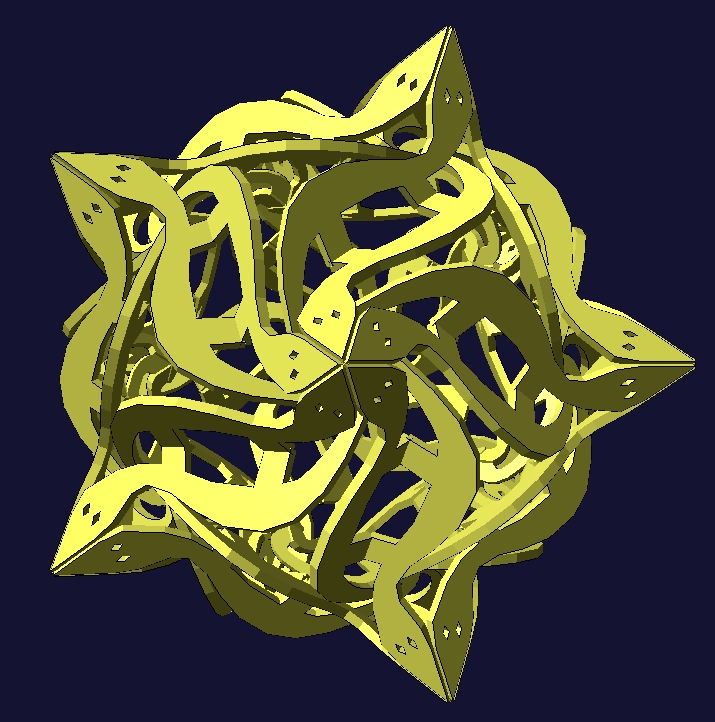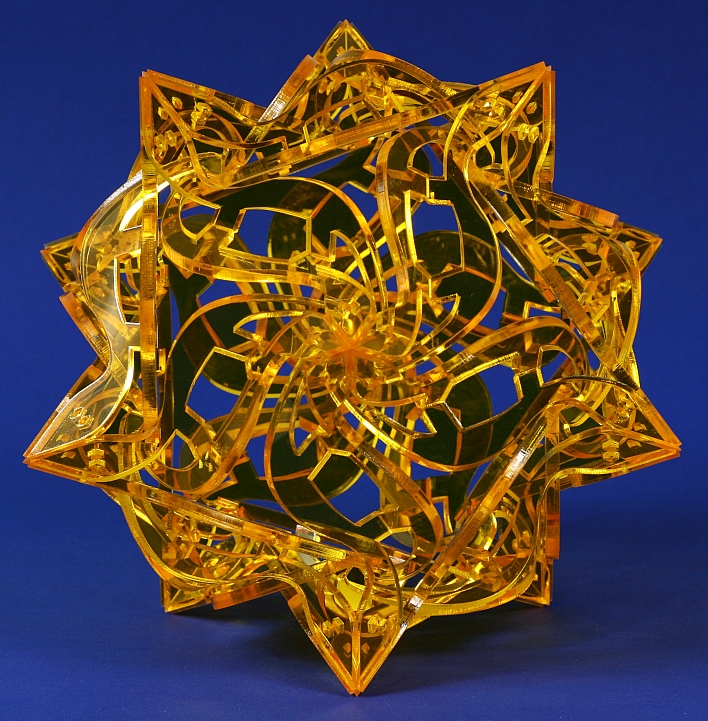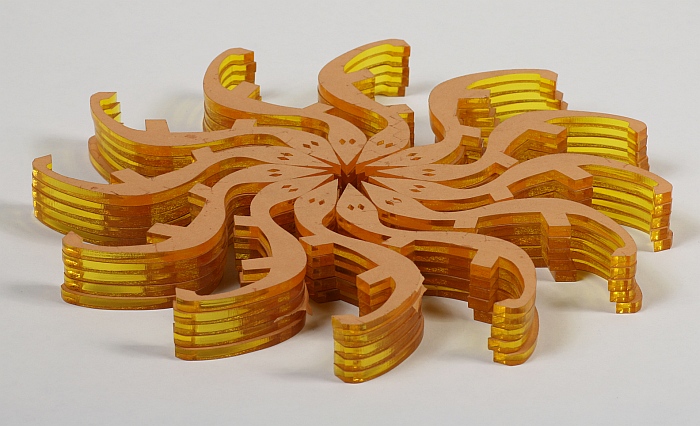This view along a five-fold axis with a
darker background probably doesn't help much in conveying the
structure. The transparency of the acrylic makes Skinks quite hard to photograph,
but when held in your hands, it is really cool, if I do say so myself.
This sculpture was very difficult
technically. I designed
Skinks
in January, 2004, but thought it might be too difficult to
physically build. Nevertheless, in 2005 I decided to laser-cut the
parts and think about how to put them together. Above, you can
see the sixty components before I sanded all the bevels, peeled off the
protective paper, and assembled them. I fiddled with them on and off
for years before managing to work out all the steps and jigging
techniques. I finally finished the sculpture in January,
2010---six years arter first visualizing the form! This is by far
the longest any sculpture has ever taken me, so I'm quite happy it is
done.

The above computer rendering with opaque components should help convey
the structure and why it is so difficult to assemble. Groups of
five heads meet together at a pyramidal point in twelve places (the
vertices of an imagined icosahedron). Floating under each of these
points, there is a vortex of five tails swirling together at another
pyramidal point, but these tail pyramids point inwards. In
addition, the feet of each skink both meet the feet of another, so in
total, each skink makes six connections. All these joints must be
made precisely, as acrylic is not flexible, with some angles convex and
others concave. Trust me, this was hard to build.


